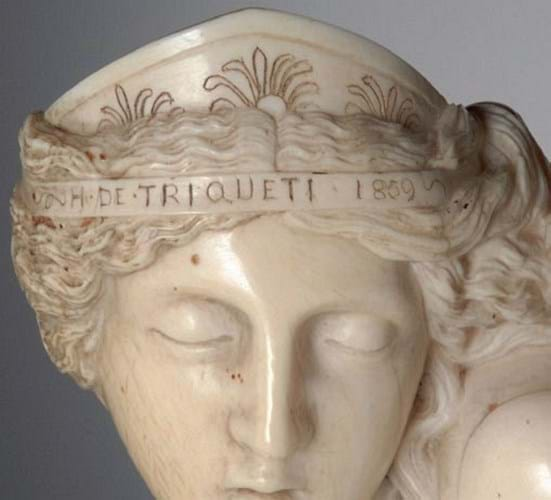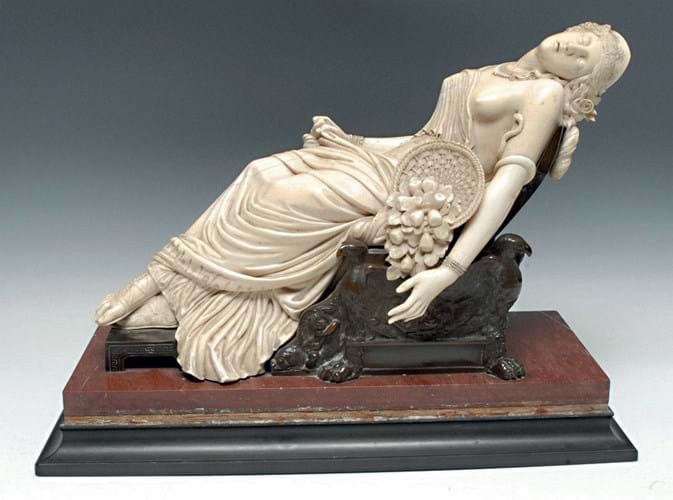As a devout Protestant and the husband of Julia, granddaughter of the English sculptor Thomas Banks (1735-1805) and daughter of the chaplain to the British ambassador in Paris, England was an obvious choice.
Triqueti’s best-known work is the decoration of the Wolsey chapel at Windsor, rededicated by Queen Victoria in memory of Prince Albert in 1871-74.
Victoria already owned several works by Triqueti – including an ivory of Sappho and Cupid shown at the 1851 Great Exhibition on the stand of the Parisian jeweller Froment-Meurice. She had purchased it the following year for 2700 francs (£108) as a Christmas gift for Prince Albert.
Although skilled in both clay and marble, Triqueti is thought to have sent terracotta models to Dieppe for carving into ivory.
In a letter of December 29, 1852, Triqueti reported to Franz Xaver Winterhalter that he was finding the medium uneconomical because “half way through one finds the interior decayed, which obliges one to start again”.
Headband inscription

Detail showing Triqueti signature.
This figure of Cleopatra, an asp around her arm as she reclines on a bronze Egyptian-styled chair, is signed to the headband H De Triqueti, 1859. It may well be one of two ivories the sculptor had sent to Windsor for the queen’s inspection in June 1859, that she chose not to purchase.
The figure came for sale in Derby on January 23 at Bamfords (21% buyer premium). Auctioneer James Lewis emphasised that this was the sort of piece he believes would merit a sale licence come the imposition of the wider ivory ban.
Estimated at £2000-3000, it sold at £22,000.















